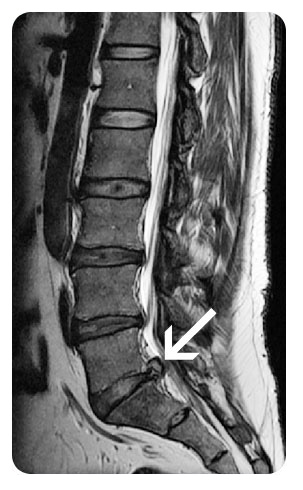Herniated Disc: How to detect and treat
Pain is one of the most characteristic symptoms, accompanied by neck stiffness and tingling or numbness in the arms. The causes of herniated disc can be multiple, from trauma, overweight to the loss of muscle strength. Genetic inheritance and aging of the structures of the spine are also factors to consider. The herniated disc is a condition that needs to be diagnosed and treated.
Our spine consists of vertebrae (bones connected). The disc, which consists of connective tissues, acts as a sort of buffer between the vertebrae. When the disc, especially as we get older, it loses effectiveness may cause a shift in its center-herniated or ruptured disc, through a crack in the outer layer.
Herniated Disc can occur in the cervical spine, in the dorsal or in the lumbar. It is produced by the entrance of the intervertebral disc into the spinal canal, affecting or compressing the spinal cord or spinal nerves. The most common symptoms are pain, stiffness and functional disability. In fact, actions or gestures as everyday as coughing, driving, standing or bending can trigger back pain.
When the herniated disc is located at the top of the column usually comes accompanied by tingling and numbness in the neck, arms and back. The pain increases with activity and improves with rest.
On the other hand, when the hernia is located in the lower or lumbar back pain usually occurs, pain radiating to the buttocks or leg, loss of strength and discomfort when moving. In this case, the rest also relieves pain.
In addition to the symptoms for the diagnosis of herniated disk performed several tests. The neurological study allows you to locate and assess the hernia, as well as reflexes, muscle strength and sensitivity. Other evidence in order to visualize the problem is the radiological studies, the scanner of the vertebral column or MRI.
Can you prevent herniated disc? The best prevention is to stay active and fit, with physical exercise as an ally. It is also advisable to keep our back and postures, such as the arch the back, on everything to the back, because it is the most sensitive area and who suffers from a greater number of injuries.
Treatment
When the first symptoms of a herniated disc, the initial treatment appear consists of administration of drugs such as NSAIDs, analgesics, and muscle relaxants. Massage therapy, short wave or ultrasound, may also help improve the effectiveness of treatment.
If after completing the treatment the symptoms do not subside, but increase at the same time lost strength, sensation or movement of a limb, the physician should ask the surgical treatment option.
Herniated Disc: Cervical and lumbar
The symptoms of cervical herniated disc are the pain, neck stiffness, increased pain when turning or bending the neck, pain radiating to the arm, sharp pain when coughing or straining, tingling and numbness of the arms.
For its part, the symptoms of lumbar herniated disc are severe lower back pain, pain radiating to the buttocks or legs, loss of strength in lower extremities, muscle weakness, sharp pain when coughing or exertion, tingling or numbness in legs or arms.
